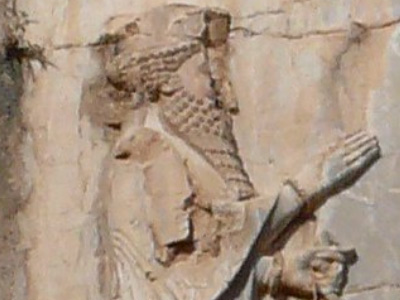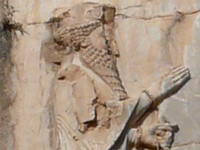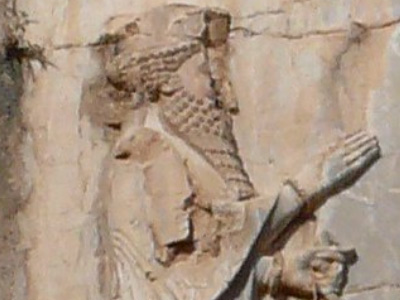Battle of Artemisium (480 BC)

Battle
First day
When the Persians saw the Allied fleet rowing towards them, they decided to seize the opportunity to attack, even though it was late in the day, as they thought they would win an easy victory. They quickly advanced on the much smaller Allied fleet. However, the Allies had come up with a tactic for this situation, where they turned their "bows on to the barbarians, [and] they drew their sterns together in the middle". This is usually taken to mean that they formed into a circle, with their rams pointing outwards; Thucydides reports that in the Peloponnesian War, Peloponnesian fleets twice adopted a circular formation, with their sterns together. However, Herodotus does not actually use the word circle, and Lazenby points out the difficulty of forming a circle of 250 ships (the Peloponnesian fleets had 30–40 ships). It is thus possible the Allies formed into more of a crescent formation, with the wings drawn back to prevent the Persian ships sailing around the Allied line. Whatever the case, it seems likely that this maneuver was intended to negate the superior Persian seamanship, and perhaps specifically the use of diekplous.
Having assumed this formation upon the giving of a prearranged signal, the Allied ships moved suddenly outwards from this position at a second signal, rowing into the Persian ships and catching them off guard. Their superior seamanship negated, the Persians came off worst from the encounter with 30 of their ships captured or sunk. During the battle a Greek ship, captained by Antidorus of Lemnos, defected to the Allies. Nightfall then ended the battle, with the Allies having fared better than they possibly expected to.
During the night, another storm broke (this time probably a thunder-storm, possibly with a south easterly wind), preventing the Allies from setting off southwards to counter the Persian detachment sent around the outside of Euboea. However, the storm also hit the Persian detachment of ships, driving them off course and onto the rocky coast of 'the Hollows' of Euboea. This part of the Persian fleet was thus also shipwrecked, losing most of the ships.
Second day
The following day, which was also the second day of Battle of Thermopylae, the Persian fleet, now recovering from the two storms, declined to attack the Allies, and instead attempted to make the fleet seaworthy again. News of the shipwreck off Euboea reached the Allies that day, as well as a reinforcement of 53 ships from Athens.
Again waiting until late afternoon, the Allies took the opportunity to attack a patrol of Cilician ships, destroying them, before retreating as night fell. These ships were possibly survivors of the wrecked detachment sent around Euboea, or were perhaps anchored in an isolated harbour.
Third day
On the third day of the battle the Persian fleet was ready to attack the Allied lines in full force. Seeing the Persian fleet assemble, the Allies attempted to block the Straits of Artemisium as best they could, and waited for the Persians to attack. The Persians formed their ships into a semicircle and tried to enclose the Allied fleet, upon which the Allies rowed forward and joined battle. The battle raged all day long, with the Allies hard put to defend their line. When the fleets finally disengaged at nightfall, both sides had suffered roughly equal losses. However, the smaller Allied fleet could scarcely afford such losses; half the Athenian ships (the largest contingent in the fleet) were damaged or lost.
Returning to Artemisium, the Allies saw that they would probably not be able to hold the line for another day, such were their losses. They thus debated whether they should withdraw from Artemisium, whilst they awaited news from Thermopylae. Themistocles ordered the men to slaughter and barbecue the flocks of the Euboeans, so that they would not fall into Persian hands. Abronichus arrived on the liaison ship from Thermopylae and told the Allies of the destruction of the Allied rearguard at Thermopylae. Since holding the Straits of Artemisium now no longer held any strategic purpose, and given their losses, the Allies decided to evacuate immediately.
HISTORY

RESOURCES
This article uses material from the Wikipedia article "Battle of Artemisium (480 BC)", which is released under the Creative Commons Attribution-Share-Alike License 3.0.
© Stories Preschool. All Rights Reserved.









